The weekly blog from Po Toi.
A short week, with no ferry now on Friday so the week ends on Thursday. Better news on the generator front, PCCW have agreed to subsidise the generator fuel costs with $5000 each month, so we now have overnight power again. Thank you Richard Lee, all is forgiven.
Land Birds
Land bird of the week was the female Bull-headed Shrike which took up residence near the sandy beach at the neck of the SE peninsular and stayed until Wednesday morning.


At last I managed to photograph the elusive Chestnut Buntings, this pair were mostly to be found around the stream leading into the lagoon.



An odd couple this, a White-shouldered and a Red-billed Starling, the only two starlings on the island, and always seen together. Also an early Pallas’s Warbler on Tuesday.
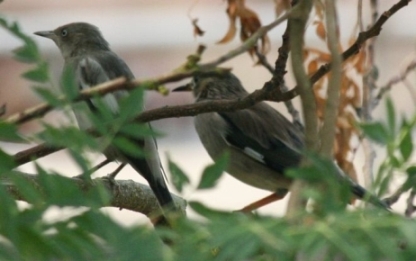
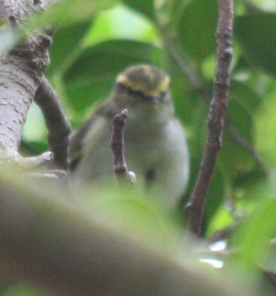
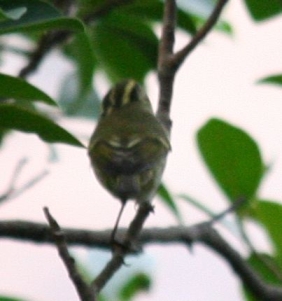
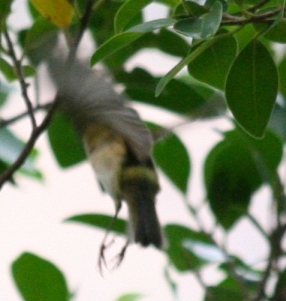
Visible migration
No doubt about bird of the week here, the eagle which flew in off the sea early on Wednesday morning. I thought it was an Imperial Eagle, but the photos show it was a juvenile Bonelli’s Eagle, or so I think, any comments from anyone? This bird was flying north directly into a force 5 wind and, from the timing, I guess it had left one of the Dangan Islands just after dawn for the flight across the sea. This is typical of many of the visible migrants seen from the S point of Po Toi.

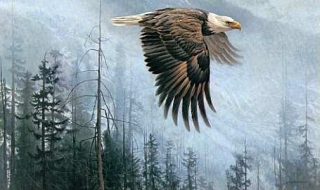

Peregrines are no problem for an eagle but they are a major hazard for the smaller migrants attempting the same run in early daylight. Here, an unknown bird has a predictable fate. In sequence, the move in for the kill, a miss, run for cover, knockdown into the sea, swimming, the pick-up, the kill, the take-away. Can anyone identify the unfortunate bird, I think it might be another Hair-crested Drongo?








Other visible migrants included many pipits, including a pair making a ‘tsip’ call just like the Buff-bellied Pipits I saw last winter at Long Valley. Also more migrant Chinese Bulbuls, these on Stanley peninsular and on Po Toi.


Sea Birds
No doubt about seabird of the week, there was only one but what a cracker. A Brown Booby flying NE in the channel between Po Toi and Dangan Island at 6.50am on Thursday morning, just when the wind and waves were at maximum. No photo I’m afraid, it was too far away for my camera but the gannet-like size, shape and flight, dark upperparts with white belly and underwing patch were easy to see even at long range.
Finally, a minor drama with the barge constructing the new jetty on the SE peninsular. In the high winds on Wednesday, one of the two cables holding it to the shoreline snapped, leaving it to drift out only held by a single cable (it has no power of its own) and also stranding three workmen on the shore. I guess it survived, it was not there today (Thursday) so I think it was towed away. Only a half-finished jetty now.

PS In answer to the previous posting, yes, Masked Laughingthrush are resident on Po Toi. But the 7 Black Drongos is a good record, most having left more than a week ago. The best place to hear and sometimes see Chestnut Bunting is the rocks overlooking the small stream which feeds the lagoon next to the restaurant. Go to the far end of the concrete square, there is a path up on to the rocks at the far right corner.
[
Last edited by wgeoff at 18/08/2010 17:02 ]


